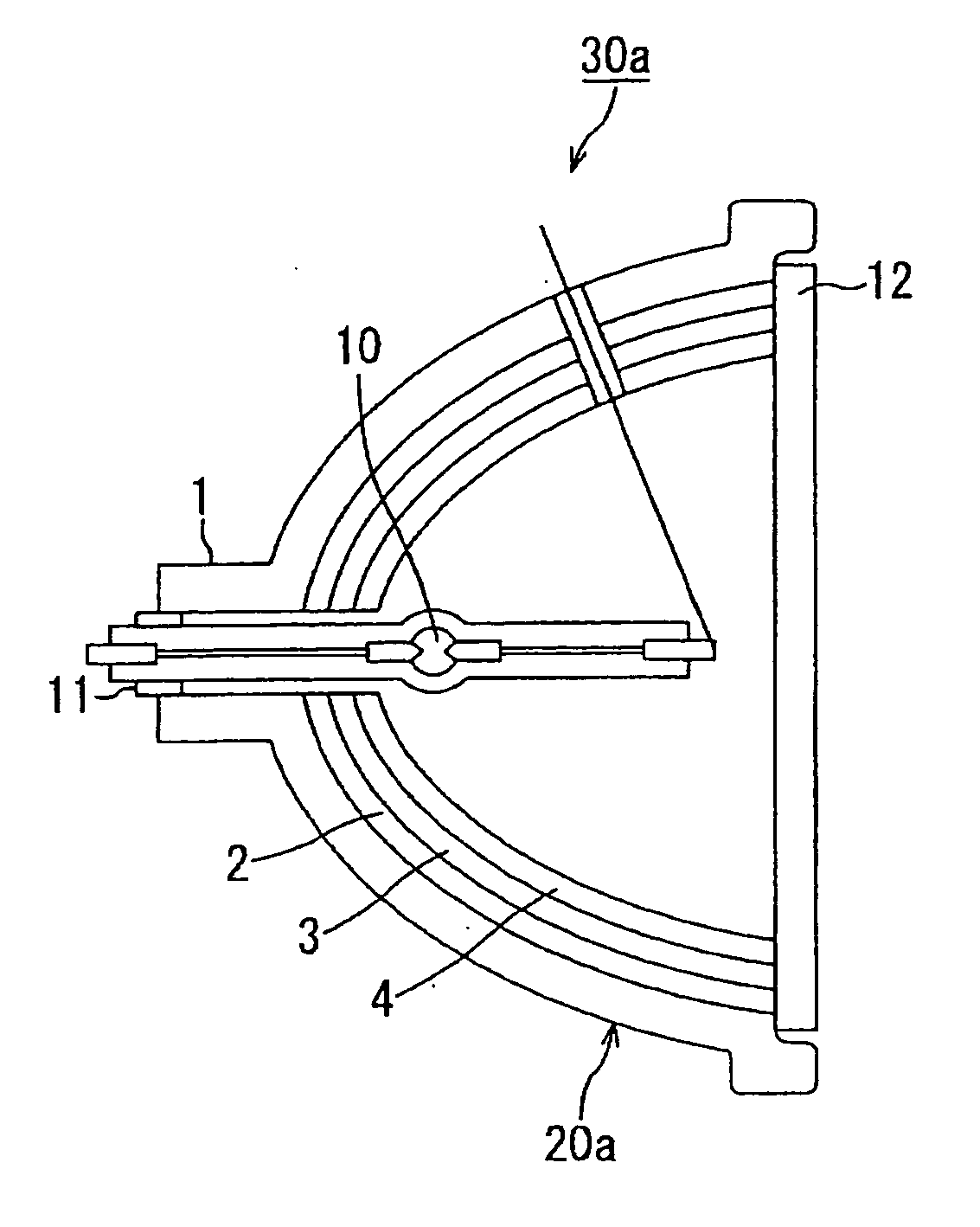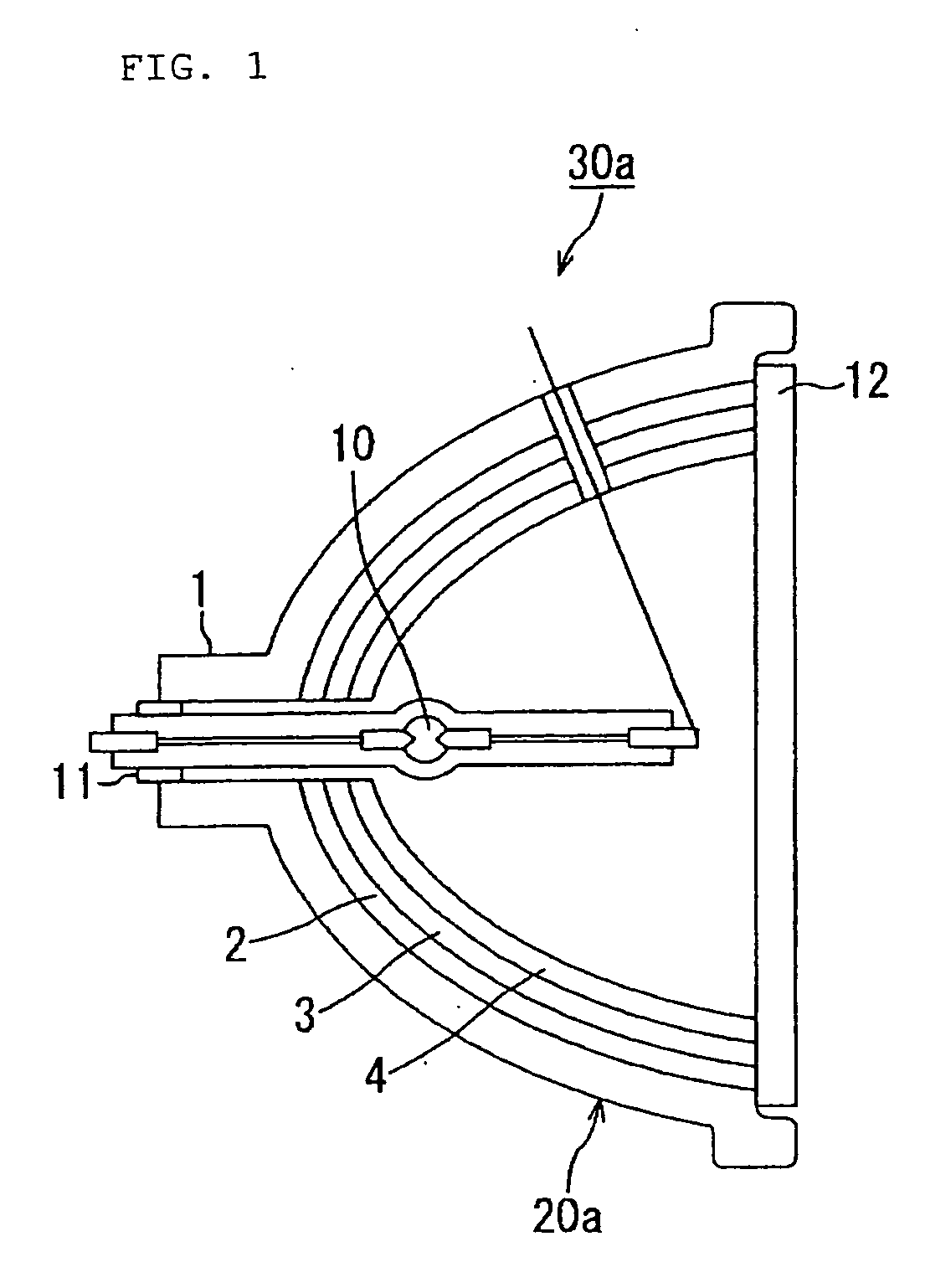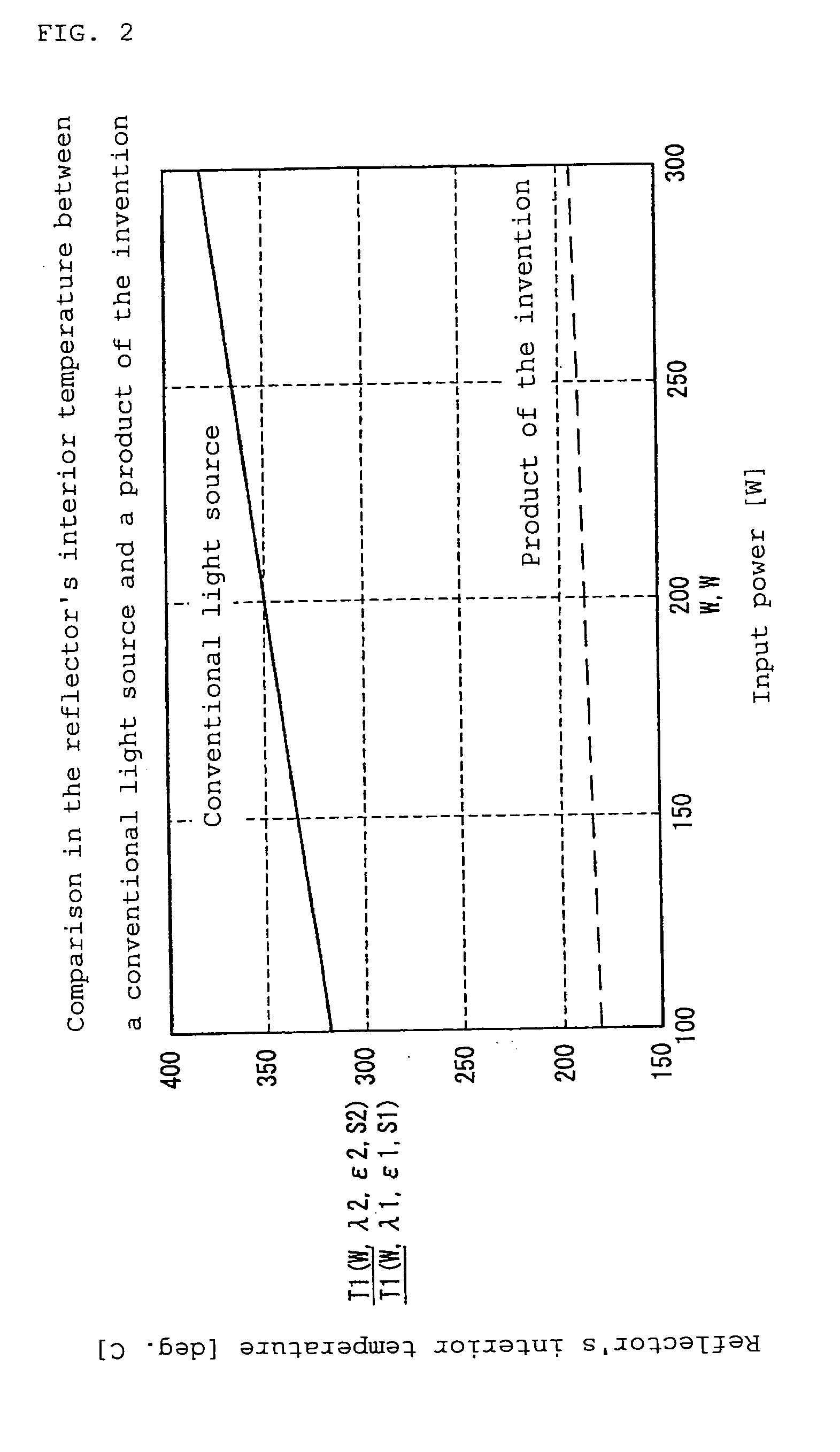Reflector, light source device and projection display apparatus
- Summary
- Abstract
- Description
- Claims
- Application Information
AI Technical Summary
Benefits of technology
Problems solved by technology
Method used
Image
Examples
first embodiment
The First Embodiment
[0063]FIG. 1 is a configurational view showing an overall structure of a light source device including a reflector according to the first embodiment of the present invention. Here, the same components as in the conventional reflector shown in FIG. 6 are allotted with the same reference numerals.
[0064] In the figure, a light source device 30a according to the first embodiment of the present invention includes a light source 10 and a transparent explosion-proof glass 12, in addition to a reflector 20a. Reflector 20a is comprised of a concave mirror substrate (heat radiating means) 1, and an infrared-to-heat converting layer (light-to-heat converting component) 2, a gloss-forming buffer layer (buffering layer) 3 and a visible light reflecting layer (specific wavelength range reflecting component) 4, laminated on the mirror surface side (the light source-side surface) of concave mirror substrate 1.
[0065] Next, the detailed configurations and functions of the reflec...
second embodiment
The Second Embodiment
[0081]FIG. 3 is a configurational view showing a reflector structure according to the second embodiment of the present invention.
[0082] In the reflector 20a according to the first embodiment, concave mirror substrate 1, infrared-to-heat converting layer 2, gloss-forming buffer layer 3 and visible light reflecting layer 4 are provided with their layers joined in surface contact with one another. In a reflector 20b according to the present embodiment, the joined surfaces between the aforementioned layers are formed with projections and indentations, as sown in FIG. 3.
[0083] More specifically, projections and indentations are formed first on the surface of a concave mirror substrate 1b between concave mirror substrate 1b and an infrared-to-heat converting layer 2b.
[0084] Also, projections and indentations are formed on the surface of the infrared-to-heat converting layer 2b between the infrared-to-heat converting layer 2b and a gloss-forming buffer layer 3b.
[00...
third embodiment
The Third Embodiment
[0087] The reflector structure according to the third embodiment of the present invention is the same reflector structure according to the first or second embodiment of the present invention, except in that the method of forming the constituents of infrared-to-heat converting layer 2 and gloss-forming buffer layer 3 and part of the structure are different. Hence, only the different points will be described in the description hereinbelow,
[0088] Infrared-to-heat converting layer 2 is formed by coating ceramic over concave mirror substrate 1 formed of aluminum and calcining these. That is, this calcination modifies the interface between concave mirror substrate 1 and the ceramic coating, producing a metal oxide layer. This metal oxide layer has the function of converting infrared rays to heat.
[0089] Gloss-forming buffer layer 3 is formed by ceramic coating.
[0090] Next, the reason for forming infrared-to-heat converting layer 2 by the above method will be describe...
PUM
 Login to View More
Login to View More Abstract
Description
Claims
Application Information
 Login to View More
Login to View More - R&D
- Intellectual Property
- Life Sciences
- Materials
- Tech Scout
- Unparalleled Data Quality
- Higher Quality Content
- 60% Fewer Hallucinations
Browse by: Latest US Patents, China's latest patents, Technical Efficacy Thesaurus, Application Domain, Technology Topic, Popular Technical Reports.
© 2025 PatSnap. All rights reserved.Legal|Privacy policy|Modern Slavery Act Transparency Statement|Sitemap|About US| Contact US: help@patsnap.com



